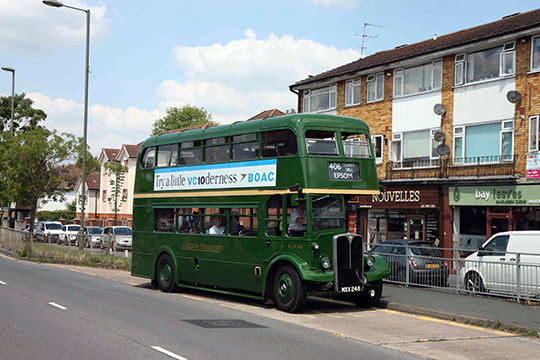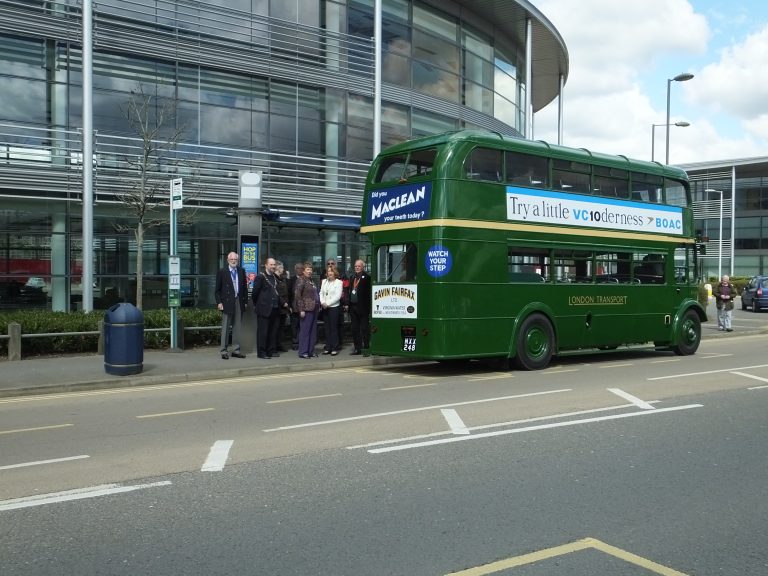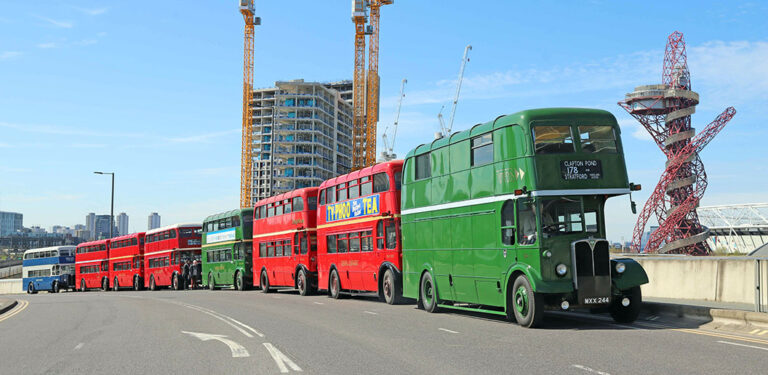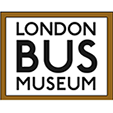RLH48 (MXX 248) : new in 1952
-
- Chassis : AEC Regent III – chassis no. 9613E6976?
- Engine : AEC A217 9.6 litre diesel
- Gearbox : 4-speed air-operated pre-select
- Body : Weymann 53 seat (27 upper deck / 26 lower) - body no. M5557?, built at Addlestone
- Vehicle Classification: RLH – Regent Low Height
Withdrawn : 1964 (12 years)
Acquired by the Museum : 2015
Status : fully-restored, operational and on display in the Museum




Photos
-
- RLH53 following extensive restoration, seen here at the LBM in October 2019 [David Bowker]
- RLH61 passing under the low bridge in Cranham [David Bowker]
- A gathering of surviving RLHs with RLH53 second in line [David Bowker]
Low railway bridges may require single-deck buses to be used, even if the route is busy enough to use a higher-capacity double-decker.
A batch of 30 low-height double-deck AEC Regent buses was built in 1950 originally for the Midland General Omn. Co. of Alfreton, Derbys. However, only 10 were actually required and the remaining 20 were purchased by London Transport. These buses could negotiate a bridge as low as 13ft 3½in (4.06m) – a standard-height double decker is around 14ft 6in (4.45m). These were put to work in the London Transport Country Area in green livery, at garages where low bridges presented difficulties on certain routes:
- Godstone garage for route 410 (Reigate - Bromley North)
- Amersham for route 336 (Chesham - Watford)
- Addlestone for several routes serving the Staines area
Mechanically, they were very similar to the huge fleet of AEC RTs but outwardly had a rather different look for London. Inside, passengers travelling on the top deck were cramped into four-across seating with a sunken gangway on the offside. This meant passengers in the offside of the lower-deck had to lower their heads when leaving their seats, to avoid hitting the ceiling.
London Transport ordered a further batch of 56, including RLH 48, the first of the type in red livery. It was allocated to Harrow in November 1952 for route 230 (North Harrow – Northwick Park), which ran under a low bridge in Headstone Lane, by Harrow & Wealdstone station.
Other members of the fleet of 76 RLHs were allocated to:
- Guildford, East Grinstead and Reigate (in green livery)
- Merton on route 127 (Morden - St Helier) for passing under Worcester Park railway bridge before it was rebuilt for higher vehicles
- Hornchurch for route 248 (Hall Lane - Cranham) passing under the low bridge at Cranham
